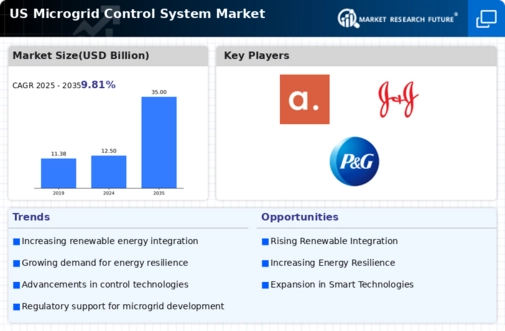The US Microgrid Control System Market is characterized by its dynamic competitive landscape, driven by the increasing demand for sustainable and resilient energy solutions. With a growing emphasis on energy independence, the microgrid sector has emerged as a key component in modernizing the power infrastructure across various regions. This market is marked by innovation and a diverse array of companies that are developing advanced technologies to enhance energy distribution, grid stability, and efficiency.
A careful analysis of competitive insights highlights the strategic moves of market participants, including partnerships, technological advancements, and regional expansions aimed at strengthening their foothold in this burgeoning market. Among the key players in the US Microgrid Control System Market is GE, a company recognized for its robust technological capabilities and extensive experience in the energy sector. GE offers a comprehensive suite of microgrid control solutions that integrate hardware and software to optimize energy consumption, enhance operational efficiency, and provide reliable power management.
The strength of GE lies in its strong brand reputation and established relationships with utilities and government agencies, positioning it favorably within the competitive landscape. Moreover, GE's investment in research and development enables it to stay ahead of emerging trends and technologies, ultimately allowing it to provide cutting-edge solutions that cater to the evolving needs of the market. This emphasis on innovation, alongside their commitment to sustainability and resilience, further consolidates GE's position in the US microgrid control system arena.
Enphase Energy also plays a significant role in the US Microgrid Control System Market, primarily focusing on solar energy systems and microinverters. Enphase has developed a range of products that facilitate efficient energy management and storage, contributing to the growth of decentralized energy generation. Their integrated systems allow users to harness renewable energy effectively, which is crucial for the expansion of microgrid applications. The company’s strengths include its innovative technology, customer-centric solutions, and extensive distribution channels that enable broad market presence across various regions.
Additionally, Enphase has actively pursued strategic mergers and acquisitions to expand its capabilities and enhance its product offerings, positioning itself as a leader in renewable energy solutions. This approach ensures that Enphase remains competitive in the ever-evolving landscape of the US microgrid control system market, responding effectively to the increasing demand for sustainable solutions.














Leave a Comment